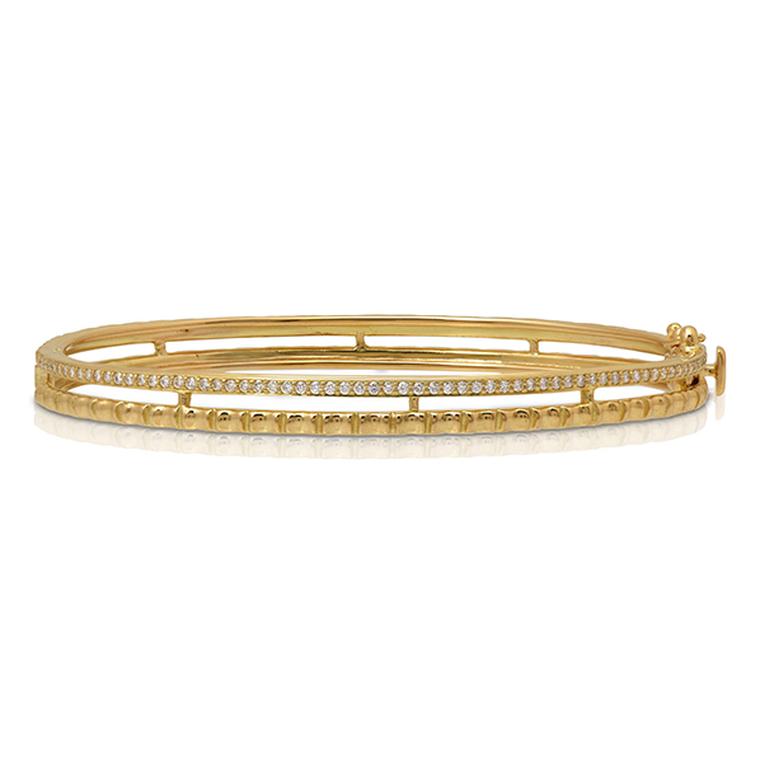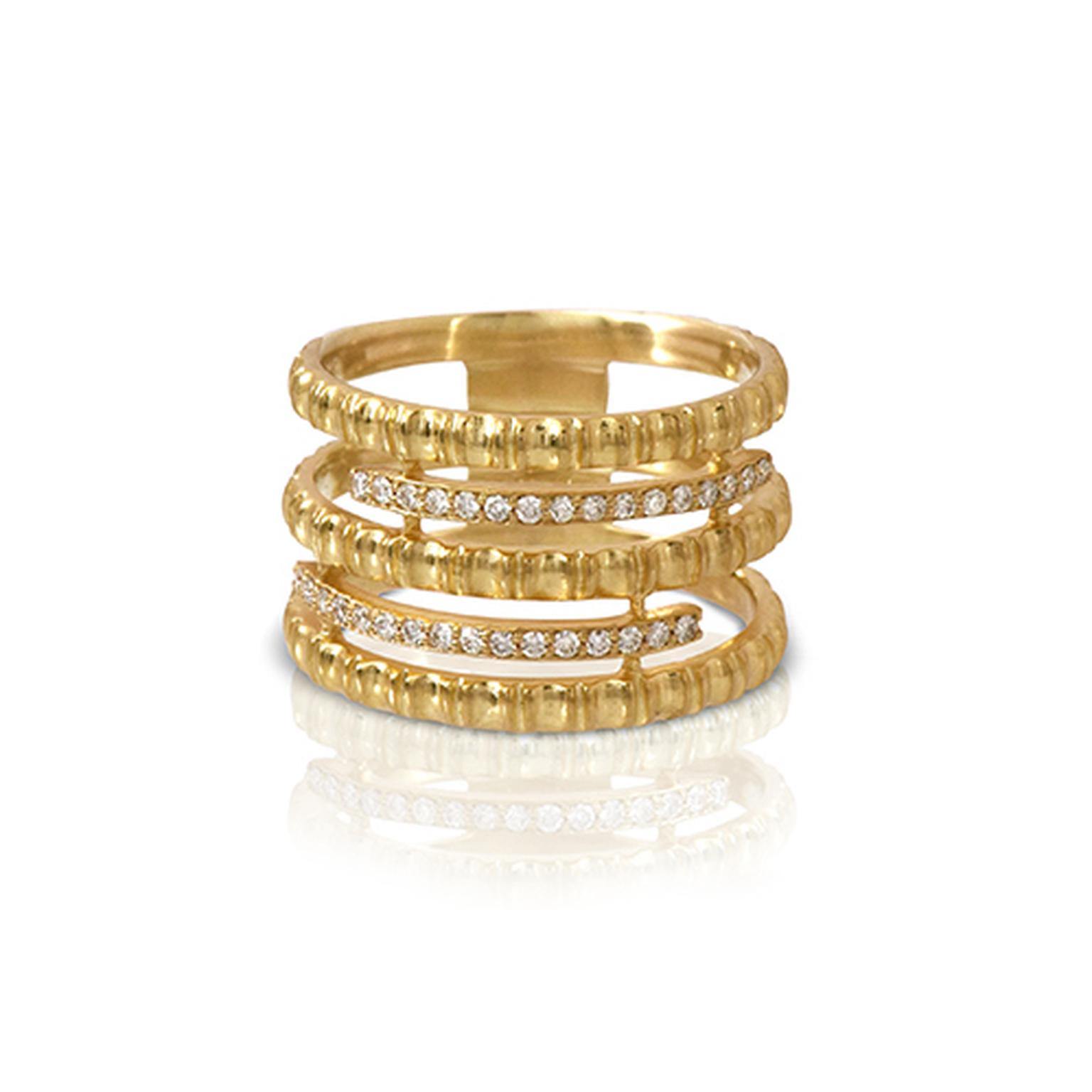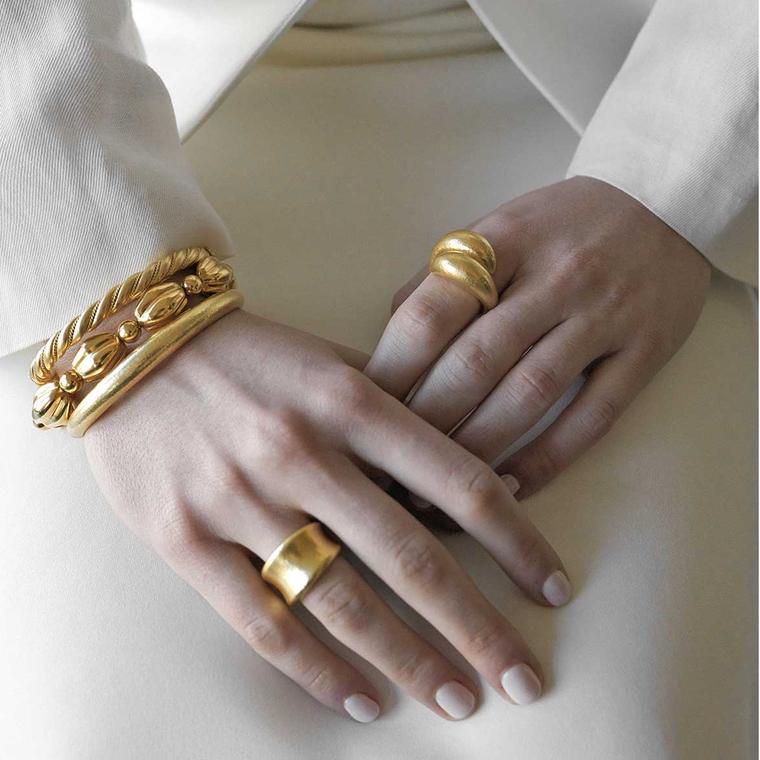Open to influences from around the world Lalaounis, the Greek jewellery house, presents the Chiwara collection. The yellow gold and diamond Chiwara jewels are inspired by the sculptural carved headdresses of the Bamana people in Western Africa. The chiwara is used at planting and harvesting ceremonies and is associated with fertility and the passing on from generation to generation of farming traditions. Multiple variants exist of the chiwara or ci wara as they are also known. Referred to as boli power objects they can be male or female or even abstract and include a stylised antelope form. During ceremonial rites, the chiwara is worn on top of a basket on the head, the person’s body entirely concealed under a shaggy raffia cloak.
Read more about the history of Lalaounis jewellery here.
Once seen, never forgotten, the Chiwara sculptures are one of the most recognisable art forms of Africa. Their elegant, stark lines, distinctive triangular markings and sophisticated use of negative space have inspired many C20th Modernist artists including Constantin Brâncusi and Fernand Léger. Today the maison honours the famous Chiwara with a textured gold line of rings, earrings, necklaces and bracelets as Maria Lalaounis, Creative Director of the Greek jewellery house, brings a precious interpretation to this age-old iconic artefact.
Demetra Lalaounis Auersperg, co-CEO and Director of International business of the Greek family-run and owned firm explains: ‘The elegant, linear and zig zag open-work carvings of these male and female headdresses, as well as the rich symbolism behind them, inspired us to create this minimalist and geometric collection.’
The jewellery house Lalaounis has a history of imbuing its jewels with narratives from different cultures. Ilias Lalaounis, who founded the firm in Athens in 1969, began making jewels inspired by his passion for history and in particular the cultural heritage of his country. His first jewels echoed the designs of antique artefacts in evocative and large scale pieces made using ancient techniques such as hand-hammering and filigree work in 18 or 22–carat gold. This was the start of the house's tradition of designing jewels evocative of cultures ranging from the Paleolithic times to the Minoan, Classical and Hellenistic eras and later moving into other civilisations such as the Byzantine, Far Eastern, Celtic, Viking and Native American worlds.
‘Since the 1970’s the importance of ethnic global culture has been key to the Lalaounis brand. We are always looking for the common delineator which is jewellery with a story to tell and interpreting it in our unique way. The initial attraction to the Chiwara was visual but the more we researched the subject, the more interesting it became as it has such a great story to tell and talks about agriculture, the importance of men and women working together and respecting the planet, topics which are so relevant today,’ explains Lalaounis Auersperg.
The African theme carries on from the highly successful Nubia collection that interpreted engravings found on Nubian pottery into fine jewels. Like the Nubia, Chiwara has clean minimalist lines with a strong personality while maintaining the characteristic Lalaounis brand's style. Textured, polished gold in circles or bars are delicately linked together to create jewels that are airy and light but with an arresting visual impact. Like all the Lalaounis firm's designs, the Chiwara is not a literal interpretation but an essence of the style and the spirit of the sculptures. Elements such as the zig zag forms and the tapered horns of the stylised antelope are captured in the slender gold bars and hoops. The rich, wavy texture of the gold evokes the hand-made ethnic appeal of the original Chiwara and the diamonds serve as highlights to the carefully honed forms.
Evocative and universal in their simplicity, the Chiwara jewels are easy to wear both day and night. The double and triple-drop earrings offer a sophisticated dressed-up look that would look equally as good with a kaftan on the beach. Lalaounis is able to create such original and refined jewels as it has its own manufacturing facility in Athens. Working closely with the design team, each jewel is fine-tuned and tweaked until it meets the house’s rigorous standards, a luxury few independent jewellery houses can claim.
The timing of the launch of Chiwara chimes with the rising interest in African art and respect for sources of ancestral knowledge. The spark was first lit when creative director Maria Lalaounis saw a chiwara sculpture. ‘Sometimes I see something,' says Lalaounis Auersperg, 'sometimes my sister Maria sees something, we think about it and talk it through and when the time is right we develop the idea.’ The family ethos of working together continues in exciting new collections like this, stamped with the house of Lalaounis’s hallmark style and elegance.






























